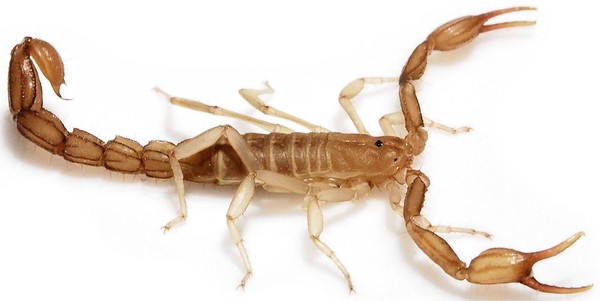A doctoral student at the University of Nevada, Las Vegas, discovers the tiny Wernerius inyoensis during a nighttime search of the park. Don’t worry, Angelenos: The elusive species may live underground and is likely to be found in dry, sandy habitats.
Even in territory as well-traversed as California, biologists can discover new creatures. The latest? A species of scorpion in Death Valley National Park.

Wernerius inyoensis is tiny — just over half an inch long — and may live underground.
Matthew Graham, a doctoral student at the University of Nevada, Las Vegas, discovered it during a nighttime search of the park, using a special ultraviolet light that made the animal glow in the dark. Scorpions have chemicals in their exoskeletons that fluoresce under UV light.
The critter is also elusive. Michael Webber, another UNLV doctoral candidate who helped identify the species’ unique features, said that to her knowledge, Graham hadn’t yet found any others.
Wernerius inyoensis is probably closely related to two other rare scorpions in the desert Southwest: Wernerius spicatus, which is native to Joshua Tree National Park, and Wernerius mumai, which lives along the Colorado River near Parker, Ariz.
Like those animals, Wernerius inyoensis has an unusually shaped spine above its stinger. But differences in the animal’s tail, reproductive organs and pedipalps — its pincers — led Graham and Webber to conclude it was a unique species.
The grad students named the scorpion after the Inyo Mountains where they found it, Webber said. The discovery was described in the journal ZooKeys.
“People call scorpions living fossils,” Webber said. They evolved around 400 million years ago and their bodies have changed very little since. Scorpions are arachnids, like spiders. They live all over the world, but in the American Southwest they’re most likely to be found in dry, sandy habitats.
That means Angelenos probably don’t have to worry about stumbling across Wernerius inyoensis in their backyards, Webber added.
The specimen discovered at Death Valley will go on long-term loan to the San Diego Natural History Museum.
Source : LATimes.com
 Thfire.com Everyday news that matters
Thfire.com Everyday news that matters 